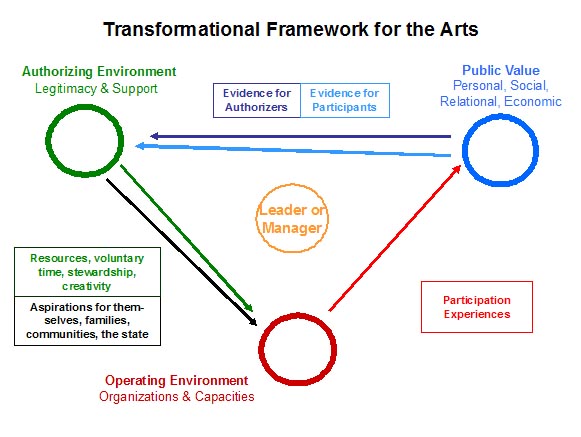I often find myself explaining to people the under utilization of our museums and the impact it can have on public value. An important question raised by cultural leaders, institutional funders and policy makers internationally is underlining the scope of public values and how to measure it? The Cultural Value Project, conducted by the Arts and Humanities Research Council, UK provides additional insights into this long debate.
How do we create public value? According to Mark H. Moore, the Hauser Professor of Nonprofit Organizations at Harvard University, governments and institutions work together with the shared purpose of creating value that would benefit the general public. The three cornerstones of the strategic triangle that Moore developed are:
- Authorizing environment, which provides support through approval and funding
- Operational environment, which applies to its organizational capacity and assets
- Joint purpose of creating public value
Unlike the private sector, public values are not restricted to or the responsibility of a company; the onus lies on multiple organizations, governments and non-profits. According to Moore, only by attending to the entire strategic triangle can public agencies ensure that their work is relevant and beneficial to citizens and decision-makers and then, ultimately, receive the resources they need to continue doing good work.
The National Public Management system, popular in many countries, links fund allocation to delivery of government policy. Cultural organizations are asked to produce evidence that they are implementing and contributing to policy in return for funding. It helps focus the energies of the cultural sector as well as in articulating its value. However, most evaluations that measure culture revolve around quantitative data, which is reflective of instrumental value.
According to the Culture Value Project, museums also contribute towards intrinsic and institutional values that include user experience, community belonging and a sense of identity. Reflection, reasoning, enjoyment, inspiration are few of the keywords visitors use to describe this intrinsic value. It relates to the subjective experience of culture that museums offer.
Institutional value as described by Holden is “the processes and techniques that organizations adopt in how they work to create value for the public…” In knowing your audience and serving them, value is created – an idea that was not previously recognized.
How does this reflect within the Indian scenario? Do our museums reflect the three values – instrumental, intrinsic and institutional? If yes, how are we measuring this evidence and making sense of the data? Some pertinent questions that our cultural leaders and institutional arts practitioners need to ask: What government policies are delivered through our museums? Are our museums relevant to a diverse age and linguistic demography? Are we looking at our viewers as consumers or co-creators? Do we see our museums playing a part in the overall well-being of the community?
The answers to these questions will help unlock ways in which we invest in outreach and educational programs at museums and provide impetus towards capacity building of museum staff on one hand, and community development on the other.
About the Author
 Tejshvi Jain is the founding director of Rereeti and worked at the National Gallery of Modern Art, Bangalore prior to setting up this non-profit organization. Write to us info@rereeti.org.
Tejshvi Jain is the founding director of Rereeti and worked at the National Gallery of Modern Art, Bangalore prior to setting up this non-profit organization. Write to us info@rereeti.org.








Reblogged this on EVE Museografía.